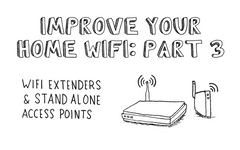Payment methods accepted

Bend-Insensitive Fiber – What Is It?
Written by Ben Hamlitsch, trueCABLE Technical and Product Innovation Manager RCDD, FOI
One of the important considerations when looking at optical fiber is that it is sensitive to stress, particularly bending. When optical fiber is stressed by bending, the light that is transmitted through the core will start to scatter and escape causing some of the light to be lost from the core into the cladding, creating an even higher loss in the stressed section of the fiber. If you put a visible laser in a fiber and stress it, you can see the light lost by the stress.

Fiber coatings and cables are designed to prevent as much bending loss as possible, it's part of the fiber design. Bending losses are an inherent characteristic of fiber both in singlemode fiber (SMF) and multimode fiber (MMF) with fiber optic cabling showing more sensitivity and stress at longer wavelengths.
Optical fiber manufacturers knew that something needed to be done to improve structural characteristics of the optical fiber. In 2007, a new type of fiber called "bend-insensitive" singlemode fiber was introduced, which was followed by multimode fiber in 2009. Manufacturers began demonstrating this fiber by bending it around impossibly small bends or stapling it to a piece of wood, something no one would even think of doing in the early days of fiber. This was something unheard of and somewhat unbelievable. But the demonstrations showed that these fibers could be bent in ways that seemed impossible with very little light loss.
What did they do differently? Manufacturers were more willing to explain what they had done to make these fibers so tolerant to tight bends once they had all the patents filed. An additional material with a lower index of refraction was used between the core and cladding. This was built into the fiber to basically reflect the lost light back into the core of the fiber. It was first tested and proven in singlemode fiber. Once that proved to work well in 2009, manufacturers introduced multimode fibers, which showed using a similar technique could also improve bending loss in multimode fiber.
Examining the design of bend-insensitive multimode fiber
In regular graded index multimode fiber, there are about 400 modes (or rays of light) being transmitted down the fiber. The inner modes are "strongly guided" which means they have little sensitivity to bending stresses. But the outer modes are "weakly guided" which means they can be stripped out of the core when the fiber is bent.
Bend-insensitive fiber adds a layer of glass around the core of the fiber which has a lower index of refraction. This literally "reflects" the weakly guided modes back into the core when stress normally causes them to be coupled into the cladding. Some early singlemode fibers used a similar technology to contain the light in the core of the fiber, but this design has a much stronger effect.
The trench, or moat as some people call it, surrounds the core in both bend-insensitive SMF and bend-insensitive MMF to reflect any lost light back into the core. The trench is just an annular ring of lower index glass surrounding the core with very carefully designed geometry to maximize the effect.

Bend-insensitive fiber (or BI fiber as it is now called, even BI MMF or BI SMF) has obvious advantages. In patch panels, it should not suffer from bending losses where the cables are tightly bent around the racks. In buildings, it allows fiber to be run inside molding around the ceiling or floor and around doors or windows without inducing high losses. It's also insurance against problems caused by careless installation.
Bend-insensitive fibers are available in 50/125 MM (OM3 and OM4) and SM versions. Considering the advantages of bend-insensitive fiber, and the small incremental cost to manufacture it, some manufacturers have decided to make all their 50/125 MM fiber bend-insensitive fiber.
Many applications for bend-insensitive singlemode fiber are in premises installations like apartment buildings or for patch cords, where it simplifies installation and use. Bend-insensitive singlemode fiber is also used in OSP cables since it allows fabrication of smaller, lighter, high fiber count cables.
Another application for bend-insensitive fibers is micro-cables and high fiber count cables. By reducing the fiber's sensitivity to stress, one can make the buffer diameter smaller (200 instead of 250 microns) and squeeze more fibers into smaller cables. This has led in two directions. Micro-cables are simply like loose tube cables shrunken to small sizes, about half the size of conventional cables. This 144-fiber cable is about the size of a pencil.
What about compatibility with conventional fiber cable?
Many questions often arise, such as: “Are these fibers compatible with regular fibers?” “Can they be spliced or connected to other conventional (non-BI) fibers without problems?” “How does the inclusion of higher order modes affect bandwidth?” The answers seem to be yes for all singlemode fibers. Since only one mode is guided in the core, the trench has a minimal impact on system performance and measurement. It seems you can mix and match regular and bend-insensitive singlemode fibers with no problems.
For MM fibers, it is less clear. Measurement of core size, numerical aperture, differential mode delay (DMD) and bandwidth, were developed prior to the introduction of bend-insensitive multimode fiber designs. For the most part, bend-insensitive multimode fiber can be made to be compatible to other non-bend insensitive fibers by modifying the core design slightly or careful engineering of the refractive trench surrounding the core. This may not eliminate all of the differences, but it does help.
Another potential factor is bend-insensitive multimode fiber may have a larger effective NA and core size than conventional multimode fibers since they propagate "leaky modes" that are attenuated in conventional fiber designs. This may affect splice or connector loss when mating BI MMF with conventional MMF but usually only in one direction, from BI MMF to conventional MMF, in a manner similar to the losses seen from mismatched fiber.
One approach to make BI MMF compatible with non-BI fibers is to modify the core index profile slightly to reduce the higher order modes. This makes them compatible to conventional fibers without otherwise materially affecting the performance of the fiber. A second approach is to leave the core index profile alone but carefully engineer the trench to produce the bend-insensitivity.
However, this is only an issue if you are installing bend-insensitive fiber cable with non-bend-insensitive stand fiber cables. If the entire installation is bend-insensitive, then these issues should not be a problem. Therefore, the testing and certification for the given installation should not have any real issue. In today’s fiber installations, more and more bend-insensitive fiber is being used and for good reason; it is much more tolerant to the effects of real-world cabling installations.
STAY CONNECTED
trueCABLE presents the information on our website, including the “Cable Academy” blog and live chat support, as a service to our customers and other visitors to our website subject to our website terms and conditions. While the information on this website is about data networking and electrical issues, it is not professional advice and any reliance on such material is at your own risk.

































